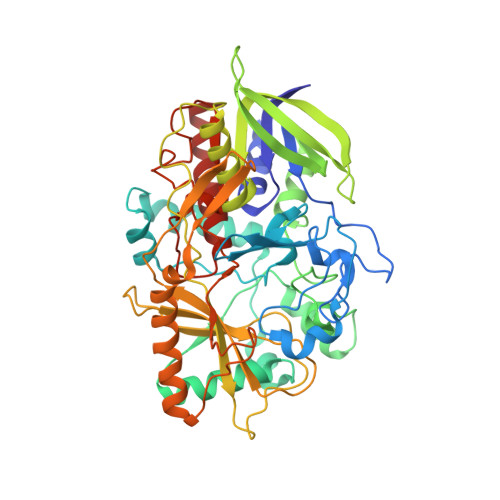Atomic Resolution Density Maps Reveal Secondary Structure Dependent Differences in Electronic Distribution
Lario, P.I., Vrielink, A.(2003) J Am Chem Soc 125: 12787-12794
- PubMed: 14558826
- DOI: https://doi.org/10.1021/ja0289954
- Primary Citation of Related Structures:
1N1P - PubMed Abstract:
The X-ray crystal structure of the flavoenzyme cholesterol oxidase, SCOA (Streptomyces sp.SA-COO) has been determined to 0.95 A resolution. The large size (55kDa) and the high-resolution diffraction of this protein provides a unique opportunity to observe detailed electronic effects within a protein environment and to obtain a larger sampling for which to analyze these electronic and structural differences. It is well-known through spectroscopic methods that peptide carbonyl groups are polarized in alpha-helices. This electronic characteristic is evident in the sub-Angstrom electron density of SCOA. Our analysis indicates an increased tendency for the electron density of the main chain carbonyl groups within alpha-helices to be polarized toward the oxygen atoms. In contrast, the carbonyl groups in beta-sheet structures tend to exhibit a greater charge density between the carbon and oxygen atoms. Interestingly, the electronic differences observed at the carbonyl groups do not appear to be correlated to the bond distance of the peptide bond or the peptide planarity. This study gives important insight into the electronic effects of alpha-helix dipoles in enzymes and provides experimentally based observations that have not been previously characterized in protein structure.
Organizational Affiliation:
Department of Molecular, Cellular and Developmental Biology, Sinsheimer Laboratory, University of California Santa Cruz, Santa Cruz, CA 95064, USA.

















